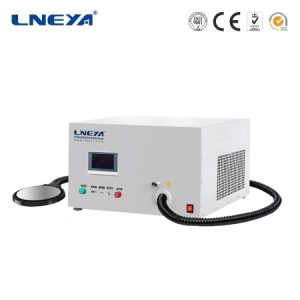The difference between direct contact liquid cooling and cold plate liquid cooling technology

The cold plate liquid cooling technology is an implementation method in which the heat of the heating components is indirectly transferred to the cooling liquid enclosed in the circulating pipeline through the cold plate, and the heat is taken away by the cooling liquid.
The technical principle of cold plate liquid cooling is to use the working fluid as the medium of heat transfer in the middle, and transfer the heat from the hot zone to the remote end for cooling. In this technology, the working liquid is separated from the object to be cooled, and the working liquid does not directly contact the electronic device, but transfers the heat of the object to be cooled to the cooling liquid through efficient heat conduction components such as a liquid cold plate, so the cold plate liquid cooling technology Also known as indirect liquid cooling technology.
The cold plate liquid cooling technology replaces air with cooling liquid as the heat exchange medium, directs the cooling liquid to the heating chip module, and through indirect contact heat exchange, the heat generated by the heating chip is exported, reducing the temperature of the chip module and improving its computing performance.
Compared with direct contact liquid cooling technology, cold plate liquid cooling technology has the following advantages:
(1) The cooling liquid of the cold plate liquid cooling technology flows in the cold plate pipeline, and does not directly contact the motherboard and chip module, and its material compatibility is better. In the selection of coolant, only the compatibility between the coolant and the circulation pipeline and the cold plate can be considered.
(2) The cold plate liquid cooling technology can be realized by retaining the original form of the existing server motherboard and refitting. This method is simple to disassemble, convenient to install, and has a high degree of technical maturity. Industrialization and large-scale production are more feasible.
However, compared with the direct liquid cooling technology, the cooling liquid of the cold plate liquid cooling technology is indirect contact with the heating chip, which increases the thermal resistance of the heat transfer process, making the heat transfer effect weaker than that of the direct cooling.
Heat pipe cooling is to use the phase change of the working fluid to enhance heat transfer and achieve efficient heat dissipation.
Raccomandazioni correlate
-
A cosa bisogna prestare attenzione quando si installa un sistema di raffreddamento della pila di ricarica CC?
924prestare attenzione quando si installa un sistema di raffreddamento della pila di ricarica in c.c.
Visualizza i dettagli -
Mandrino serie MD
2303Da -75℃ a 225°C Modello MD-708 MD-712 MDL-708 Temp. Gamma -75℃~225℃ -75℃~225℃ -75℃~225℃ Accuratezza del controllo della temperatura ±0,1℃ ±0,1℃ ±0,1℃ Uniformità della temperatura ±1℃ ±1℃ ±1℃ Piattezza ±50um ±50um ±50um Dimensione della compressa 200 mm di diametro d...
Visualizza i dettagli -
Serie di riscaldamento a raffreddamento diretto KRY
2518Rated test conditions: dry bulb temperature 20℃; wet bulb temperature 16℃. Inlet water temperature 20℃; outlet water temperature 25℃. The data in this table is for reference only. Please refer to the unit name...
Visualizza i dettagli -
How to use the 4kW new energy charging pile cooling system?
8114kW liquid cooling chiller for new energy charging pile
Visualizza i dettagli
 Refrigeratori industriali LNEYA Produttore Fornitore
Refrigeratori industriali LNEYA Produttore Fornitore












